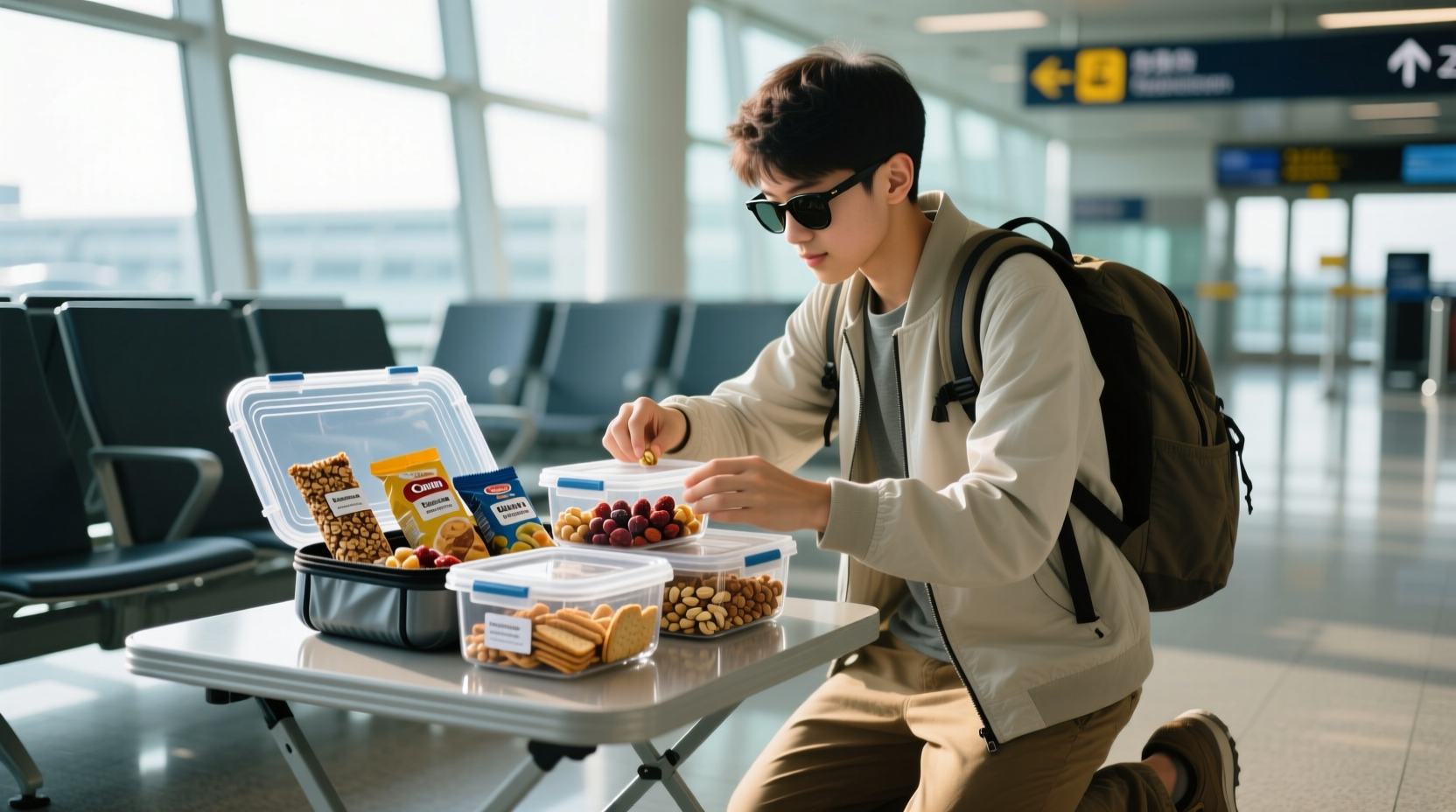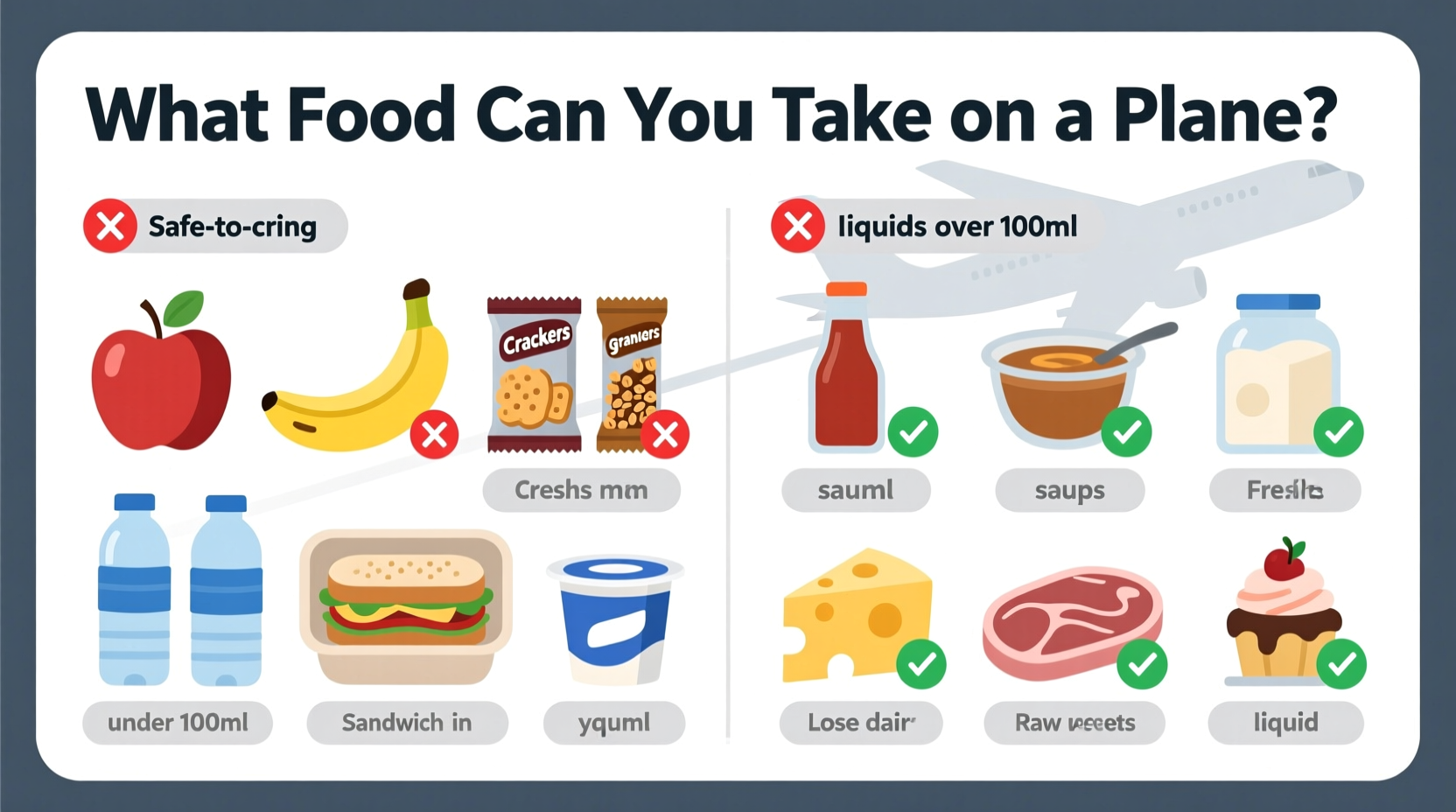Traveling with food doesn't have to be complicated when you understand the Transportation Security Administration (TSA) guidelines. Whether you're packing snacks for a long flight, bringing homemade treats to share with family, or traveling with special dietary needs, knowing exactly what food can pass through security saves time, money, and frustration at the airport.
Understanding TSA Food Regulations: What Actually Matters
The key distinction for food items isn't whether they're "food" but whether they're considered solids or liquids/gels by TSA standards. This classification determines where and how you can pack your provisions.
Solid Foods: Your Go-To Travel Companions
Dry, non-liquid food items face minimal restrictions. You can comfortably pack these in either carry-on or checked baggage:
- Sandwiches (properly wrapped)
- Baked goods including cakes, cookies, and breads
- Snack bars and trail mix
- Dried fruits and nuts
- Crispy snacks like chips and pretzels
- Hard cheeses (avoid strong-smelling varieties)
- Canned goods (in checked baggage only due to weight)
Liquid and Semi-Liquid Foods: Navigating the 3-1-1 Rule
Foods with high moisture content fall under liquid restrictions. The TSA's 3-1-1 rule applies to these items in carry-ons:
- Containers must be 3.4 ounces (100 milliliters) or less
- All containers must fit in a single quart-sized clear plastic bag
- One bag permitted per passenger
Common semi-liquid foods travelers often question include:
- Yogurt, hummus, and guacamole (must follow 3-1-1 rule)
- Soups and broths (in small containers for carry-on)
- Sauces and spreads (small containers only)
- Fruit in juice or syrup (small containers)
| Food Category | Carry-On Allowed | Checked Baggage Allowed | Special Notes |
|---|---|---|---|
| Dry snacks (chips, nuts) | ✓ Yes | ✓ Yes | No restrictions |
| Sandwiches/wraps | ✓ Yes | ✓ Yes | Wrap tightly to prevent mess |
| Yogurt/hummus | ✓ Under 3.4oz | ✓ Yes | Must follow 3-1-1 rule for carry-on |
| Fresh fruit | ✓ Domestic flights | ✓ Domestic flights | Restricted on international flights |
| Canned goods | ✗ No | ✓ Yes | Consider weight in checked luggage |
| Baby food/formula | ✓ Yes | ✓ Yes | Additional screening may occur |
International Travel: Additional Food Restrictions
When flying internationally, agricultural regulations become as important as TSA security rules. Many countries restrict fresh produce, meats, and dairy products to protect local agriculture from pests and diseases.
Key international considerations:
- Most countries prohibit fresh fruits and vegetables in carry-on luggage
- Meat products often require special documentation or are completely banned
- Some nations restrict even packaged snacks containing certain ingredients
- Always check destination country's agricultural regulations before traveling
The U.S. Customs and Border Protection maintains an updated list of prohibited food items for travelers entering the United States. Similarly, the European Union's animal and plant health rules for travelers detail what food items visitors can bring into EU countries.
Special Dietary Needs and Exceptions
TSA accommodates travelers with special dietary requirements:
- Medical foods: Larger quantities of liquid foods for medical needs (like nutritional supplements) are permitted after security verification
- Baby food: Formula, breast milk, and baby food in reasonable quantities are allowed through security
- Allergy concerns: Pre-packaged snacks help avoid exposure to allergens during flights
Declare these items separately at security for expedited screening. While they may undergo additional inspection, they shouldn't be confiscated if properly declared.
Packing Strategies for Stress-Free Food Travel
Smart packing prevents spills, odors, and security delays:
- Use leak-proof containers for semi-liquids
- Place food in sealed bags within your luggage
- Keep snacks easily accessible in your carry-on
- Avoid strong-smelling foods that might bother fellow passengers
- Consider the flight duration when packing perishables

Recent Changes to Food Travel Regulations
Food transportation rules have evolved significantly over the past decade:
- 2014: TSA began allowing larger quantities of medically necessary liquids
- 2018: Clarified rules for gel ice packs in carry-ons for medical needs
- 2021: Updated guidance for baby food and formula during pandemic travel
- 2023: Streamlined process for declaring special dietary needs at security
These changes reflect TSA's ongoing effort to balance security needs with traveler convenience, particularly for those with medical requirements or traveling with children.
Common Food Travel Mistakes to Avoid
Based on TSA screening data, these food-related errors cause the most travel delays:
- Assuming all "food" follows the same rules regardless of liquid content
- Bringing large containers of sauce or dip without transferring to travel-sized portions
- Not declaring baby food or medical foods at security
- Packing fresh produce for international flights without checking destination restrictions
- Bringing homemade foods with unknown ingredients that trigger additional screening
Remember that security officers have final discretion in determining whether an item meets liquid restrictions. When in doubt, pack questionable items in checked luggage or leave them behind.
Planning for Your Specific Flight
Before your trip, take these steps to ensure smooth food travel:
- Check your airline's specific food policies (some restrict strong-smelling foods)
- Review TSA's official list of permitted items
- For international travel, consult the destination country's agricultural department website
- When traveling with special dietary needs, contact TSA Cares 72 hours before travel
- Pack strategically based on your flight duration and destination
By understanding these guidelines and planning accordingly, you can enjoy your favorite foods while traveling without security hassles. The key is recognizing that food restrictions focus on physical properties (liquid vs. solid) rather than the food category itself, and that international travel introduces additional agricultural considerations beyond standard security rules.
Frequently Asked Questions
Can I bring sandwiches through airport security?
Yes, sandwiches are considered solid food and can be brought through security in both carry-on and checked baggage. Wrap them tightly in plastic wrap or a sandwich container to prevent messes and make screening easier. Avoid adding excessive sauces or spreads that might leak.
What are the rules for bringing cheese on a plane?
Hard cheeses like cheddar, parmesan, and swiss can be brought in both carry-on and checked luggage without restrictions. Soft cheeses like brie or cream cheese follow liquid regulations - containers over 3.4 oz must go in checked baggage. Strong-smelling cheeses might be discouraged by airlines due to passenger comfort, though not prohibited by TSA.
Can I bring fresh fruit on an international flight?
Most countries restrict or prohibit fresh fruits and vegetables on international flights to prevent agricultural pests. The U.S. allows most fresh produce in carry-ons for domestic flights, but many destinations like Australia, New Zealand, and EU countries have strict bans. Always check the destination country's agricultural regulations before packing fresh produce.
How much liquid food can I bring on a plane?
Liquid foods must follow the 3-1-1 rule for carry-ons: containers must be 3.4 ounces (100ml) or less, all containers must fit in a single quart-sized clear plastic bag, and you're limited to one bag per passenger. Larger quantities of liquid food must be packed in checked baggage. Medically necessary liquids and baby food/formula have exceptions but require declaration at security.
Can I bring homemade food on a plane?
Yes, homemade foods are permitted if they comply with standard food regulations. Solid items like baked goods, sandwiches, and snacks can be brought in carry-on or checked luggage. Liquid or semi-liquid homemade foods (soups, sauces) must follow the 3-1-1 rule for carry-ons. Labeling homemade items can speed up security screening, especially for items with ambiguous appearance.











 浙公网安备
33010002000092号
浙公网安备
33010002000092号 浙B2-20120091-4
浙B2-20120091-4